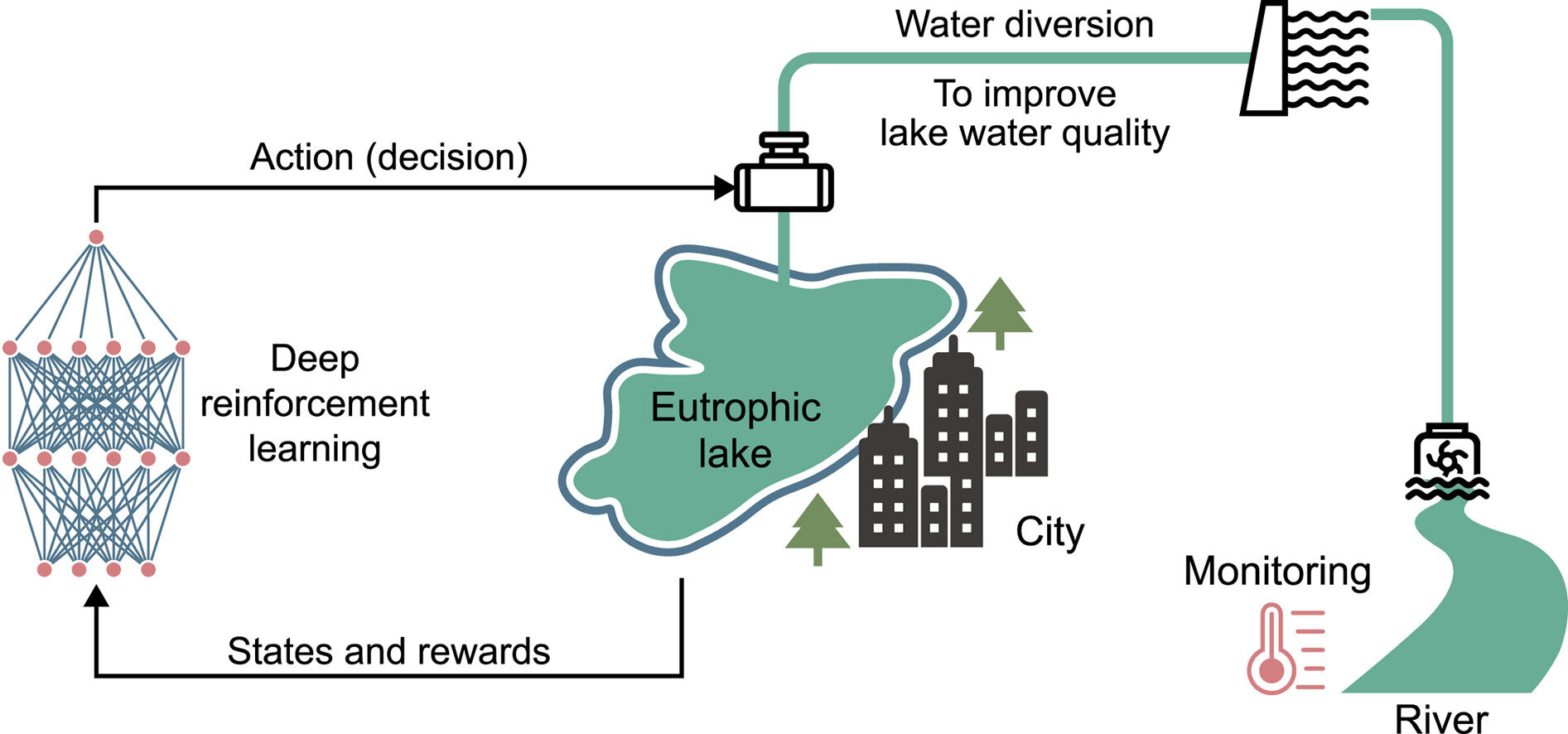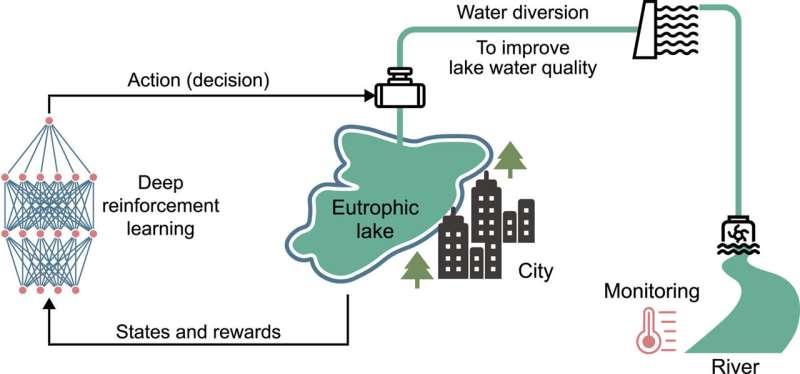

Lakes worldwide are grappling with the effects of eutrophication, such as algal blooms, primarily due to excessive nitrogen and phosphorus. The detrimental environmental effects of anthropogenic activities and climate change further aggravate the situation, thereby necessitating improved and effective measures.
Inter-basin water diversion has emerged as a prominent solution, with projects like the South-North Water Diversion Project and the Niulan River–Dianchi Water Diversion Project in China. These projects aim to enhance the lake water quality by augmenting available water resources and accelerating water circulation. However, traditional water diversion measures have struggled with the conundrum of enhancing water quality while minimizing the volume of diverted water.
In a new study published in the journal Environmental Science and Ecotechnology, researchers from Peking University developed an innovative strategy, called Dynamic Water Diversion Optimization (DWDO), to underscore the pressing need to address the persistent challenge of improving water quality in eutrophic lakes.
This innovative strategy, which couples deep reinforcement learning with a complex water quality model, was tested in Lake Dianchi, China’s largest eutrophic freshwater lake. The DWDO model significantly reduced total nitrogen and total phosphorus concentrations by 7% and 6%, respectively, while annual water diversion saw a staggering drop of 75%.
DWDO integrates deep reinforcement learning into a comprehensive water quality model. This ground-breaking method identifies the impacts of various factors, such as meteorological indicators and the water quality of both the source and the lake, on optimal water diversion. It demonstrates the adaptability of water diversion in response to a single input variable’s specific value and multiple factors influencing real-time adjustment of water diversion.
DWDO’s efficacy lies in its robustness under different uncertainties and shorter theoretical training time compared to traditional simulation-optimization algorithms. This robustness allows it to support effective decision-making in water quality management, thereby expanding its potential for broader application. The researchers were also able to extract key insights from DWDO through interpretable machine learning. They uncovered the significant drivers behind the optimal diversion decisions and their contributions to water quality improvement.
DWDO was also rigorously tested under diverse sets of hyperparameters, confirming its robustness and flexibility.
Overall, the DWDO strategy provides a promising tool for eutrophication control. By ensuring a dynamic balance between water quality improvement and operational costs, DWDO could become an essential part of future water quality management and restoration strategies.
This innovative approach marks a significant advance in tackling the global challenge of improving water quality in eutrophic lakes. As we continue to face the twin threats of increasing anthropogenic activities and climate change, the demand for such adaptive and robust solutions will only intensify.
More information:
Qingsong Jiang et al, Deep-reinforcement-learning-based water diversion strategy, Environmental Science and Ecotechnology (2023). DOI: 10.1016/j.ese.2023.100298
Provided by
Chinese Academy of Sciences
Citation:
New optimization strategy boosts water quality, decreases diversion costs (2023, July 31)
retrieved 1 August 2023
from https://phys.org/news/2023-07-optimization-strategy-boosts-quality-decreases.html
This document is subject to copyright. Apart from any fair dealing for the purpose of private study or research, no
part may be reproduced without the written permission. The content is provided for information purposes only.